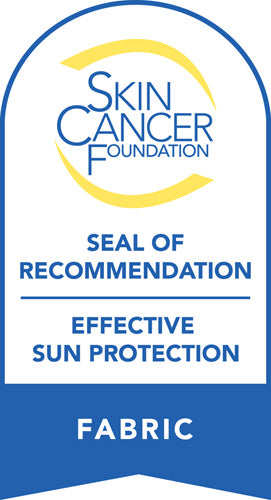Are you doing enough to prevent skin damage from the sun?
It's important to note that the sun is a valuable source of vitamin D. This vitamin is essential for boosting the immune system, mood, energy, and even bone health.
Yet, how much sun exposure is too much?
Prolonged exposure to the sun's ultraviolet rays leads to over a million and a half cases of skin cancer per year. These causes can start as early as childhood, beginning with normal sunburns during summer. That's why preventative measures like sunscreen are vital.
Importantly, how long does sunscreen last on the skin? What other measures can you take to reduce UV exposure and cancer risks?
This guide has it all. Discover the answers to these questions and more.
How Long Does Sunscreen Last On the Skin?
Sunscreen is one of the first preventative measures for skin sun damage. Children as young as preschool age already understand the importance of sunscreen. Unfortunately, it's easy to forget to put on sunscreen when you're in a rush or forget.
Sunscreen is even available in travel sizes, fitting conveniently into any sized bag. It's also available as keychains, so it's always close by. Every home should have at least a bottle of sunscreen on hand.
While applying sunscreen on a hot, sunny day feels natural, it may not occur to put on sunscreen during partly cloudy or even cloudy days. It's better to be safe than sorry; if you spend a lot of time outdoors, applying sunscreen on more overcast days doesn't hurt.
The above point speaks to the importance of other skin care products with UV protection. Plenty of skin moisturizers and even some makeup brands have UV protection.
How long sunscreen lasts depends on a few factors:
- The brand of sunscreen
- Whether or not the skin is exposed to water
- Activities of the day
- Natural gestures like wiping one's face
- Sweating from sports, walking, or heat
There are waterproof sunscreen brands. These products are best for beach days, especially if you want to enjoy the water. As a rule of thumb, this type of sunscreen should be applied on the hour to maintain protection.
Sunscreen can last up to a few hours if you're going about your day. Consider facial moisturizers with higher levels of SPF. Ensure your sunscreen isn't expired, either; this can minimize the effectiveness of your sunscreen.
Make sure to read your sunscreen's directions thoroughly. It always helps to do a spot test to ensure you don't have an allergic reaction to your sunscreen.
Types Of Sunscreen to Prevent Sun Damage
Generally, sunscreen falls into two major categories: mineral-based sunscreen, also known as "physical" sunscreen, and chemical sunscreens. Both types are effective in absorbing the sun's UV rays to protect the skin. They're just made from different ingredients.
However, there are notable differences.
Physical (or mineral) sunscreens sit on top of the skin and don't sink in as quickly as chemical sunscreens; as a result, mineral sunscreens can prevent damage from both UVA (ultraviolet A) and UVB. Mineral sunscreens produce a physical shield, or barrier, on the skin, hence the name "physical." Therefore, this sunscreen type activates more quickly than chemical-based alternatives.
Mineral sunscreens often leave a white or colored layer on the skin. It's one reason why chemical-based sunscreens may be more popular. It's also easier to apply makeup or other topicals over chemical sunscreens.
The primary ingredients in mineral sunscreen are zinc dioxide and titanium dioxide. Physical sunscreen may contain one or both ingredients. Application is typically necessary every one to two hours, especially at pools and beaches.
The other sunscreen category is chemical sunscreens. These products don't leave a noticeable film on the skin. This is the preferred sunscreen for everyday use, whether you're going to the grocery store or the office.
Chemical sunscreens absorb into the skin and stay within those deeper layers. Similar to mineral sunscreens, chemical-based alternatives absorb UV rays. This product type turns these sun rays into heat and effectively releases it from your skin.
It takes around 20 minutes for a chemical sunscreen to work. Apply your first application of sunscreen before leaving the house for the beach. Your sunscreen should activate by then.
All sunscreens wear, wipe, or sweat off after a couple of hours. Remember to reapply your chemical sunscreen, especially on bright, sunny days when you're more prone to sweat.
Look for chemical sunscreens for sensitive skin if you're prone to breaking out in rashes. Individuals with hyperpigmentation and rosacea are also advised to patch-test chemical sunscreens before applying to the entire face. The reason for this is the heat-releasing effect of chemical sunscreens.
Foods that Help Protect the Skin
Did you know some foods can help protect your skin from sun damage?
While you shouldn't rely on these foods alone, they can assist with your current sun protection regime. For example, foods like tomatoes are packed with antioxidants and lycopene. The latter is an antioxidant that also contains anti-cancer properties.
The healthy properties of tomatoes can help neutralize free radical oxidation left behind from previous sunburns. Carrots are known for being packed with healthy beta-carotene; this property is actually an antioxidant that can help safeguard your skin from additional sun damage. Sweet potatoes are also a rich source of beta-carotene and are part of a complete skin care diet.
Sweet potatoes also contain healthy amounts of vitamins C and E. These vitamins promote natural collagen, which is essential for healing sun-damaged skin. Hydrating foods like watermelon also do their part to assist in skin protection. The resveratrol found in grapes and blueberries has powerful anti-inflammatory and anti-aging properties which are great for healing sun-damaged skin.
Every sun-protection diet needs a healthy dose of Omega-3 fatty acids. These properties nourish the skin with natural UV ray protection. Studies also found that Omega-3 sources can aid in the fight against skin infections and cancers associated with sun exposure.
You can also pair your diet with supplement capsules rich in antioxidants, anti-inflammatories, and omega-3 properties. These supplements are also available in nourishing nutritional drinks and smoothies.
Always consult a physician when adopting a new health regime, including a skin health-focused plan. It's important to keep the risk of sun damage and skin cancer at the forefront of your mind. Any diet or supplement routine should be paired with daily sun protection habits.
Daily Sun Protection Tips
What are these healthy habits, exactly?
Aside from sunscreen and foods rich in skin-protecting properties, avoid direct sunlight whenever you can. This applies to daily walks, work commutes, and simple relaxation. When your sunscreen wears off, you don't want to risk another sunburn that could increase cancer risk.
Sit in the shade whenever you run out of sunscreen and don't have a spare bottle. Install a sunshade umbrella in your backyard and always sit at a table with an umbrella whenever you eat at a restaurant with outdoor seating. Pergolas and gazebos also offer sun protection.
One of the best things you can do is incorporate more sun-protective clothes into your wardrobe. You can even find these types of clothes in stylish designs or as normal loungewear. Breathable sun-protective loungewear and sportswear do exist; Bloquv specializes in activewear with UPF 50+ sun protection.
UV Protective Clothing For Women
Active women who enjoy outdoor exercise, relaxation, and daily errands outside can decrease sun cancer risk with the help of sun-protective clothing. As always, women shouldn't rely on protective clothing alone; they should always be paired with good sunscreen habits, diet, and exercise in the shade.
Start with a high-quality top for sun protection. Bloquv has an excellent range of styles ideal for daily routines like walks, aerobics, and trips to the store. For example, a relaxed and comfortable scalloped top is ideal for several outdoor activities, including outdoor birthday parties and picnics.
The scalloped top comes in a spectrum of colors perfect for various outfit combinations. Most importantly, it's made with BloqUV 50+ UPF performance material. Women also use this shirt as a bathing suit cover-up for the beach or pool and a rash guard for particularly hot days.
This long-sleeved top also comes with thumb holes for additional hand protection from sun damage.
More UV Protection Methods for Women
There are also short-sleeved shirt options if you don't want to wear a long-sleeved shirt on a hot day. However, these shirts should always be paired with sunscreen on the arms or sun sleeves.
Similar to the scalloped top, the short-sleeved relaxed crew tee is made from the same BloqUV 50+ UPF performance material called Bloqtek and comes in a range of colors. It's ideal for daily activewear, walks, gym days, and errands. This shirt may also be worn with BloqUV's protective arm guards.
Sun-protective clothing is also flexible enough for any sport, including tennis, softball, and aerobics. Women don't feel restricted by their clothes and enjoy additional UV protection from Bloqtek material.
Yet, what makes Bloqtek material so effective against sun damage?
This proprietary material is lab-tested, resulting in 98% protection from sun damage. There are no chemicals in this proprietary material and the sun protection properties never wear off, unlike sunscreen. It's also an odor-resistant, antimicrobial material perfect for activewear.
When the material comes in contact with sweat or water, the fabric produces a 5% cooling effect. BloqUV activewear is even recommended by the Skin Cancer Foundation, making it part of a complete sun protection regimen.
Women should also consider adding the following items to their sun care wardrobe:
- Everyday crop tops for exercising
- Regular long-sleeve tee with Bloqtek material
- Comfortable pullovers made with sun protection
- Zip tops and mock zip tops with Bloqtek
- Protective turtlenecks with breathable material
- Sun-protective hoodie dress for tennis
- Hoodies with Bloqtek
Bloqtek-made cover-ups are also available as simple blanket throwovers. BloqUV sun sleeves may also be purchased separately. Adjustable cover-up dresses for the pool are available, as well.
Women are encouraged to add bottoms like leg-compression leggings and capris to their wardrobe. These items do wonders for protecting the legs from direct sunlight. They're also flexible enough for high-performance athletics.
Sun-protective bottoms are also available as loose-fitting joggers.
How Men Can Reduce the Risk of Skin Cancer
Men are also encouraged to take necessary steps in preventing skin cancer, including integrating sun-protective clothing into their wardrobe. BloqUV clothing with Bloqtek fabric technology is perfect for active males who exercise outdoors; it's flexible enough for long-distance runs, bicycle riding, and hiking.
BloqUV has a range of versatile UV-protection clothes for men, including shirts, pants, shorts, and sun sleeves for added sun protection.
Men who want extra UV ray protection for daily errands and work days should opt for BloqUV's short-sleeve polo shirt. This versatile shirt is made from BloqUV's signature lab-tested Bloqtek fabric and comes recommended by the Skin Cancer Foundation. This type of shirt is best for daily wear and appropriate enough for office wear.
This shirt may be worn with casual jeans or Khaki pants for the office. It's also available in long sleeves.
Men who are looking for activewear with UV protection should consider the simple short-sleeve crew tee. This Bloqtek-made shirt pairs well with any type of exercise shorts or pants. It's ideal for outdoor exercise like fitness parks, running tracks, and simply jogging in the neighborhood.
These crew tees are also available in long sleeves for additional sun protection. The above shirts also pair well with BloqUV's sun-protective hoodie and sun sleeves.
Take Extra Steps to Protect Your Skin
Skin cancer risks are no joke. That's why it's crucial to take as many preventative measures as possible.
Ask yourself how long does sunscreen last on the skin when looking for the right products. Remember to include your choice of sunscreen with a brand-new sun care regimen that includes skin-health diets, smart daily habits, and sun-protective BloqUV clothing made from lab-tested Bloqtek fabric.
At BloqUV, we want our customers to enjoy the highest level of UV protection. We take our recommendation from the Skin Cancer Foundation seriously and strive to innovate more forms of activewear. Check our selection regularly for new clothes and deals on clearance items.
You can always contact our team for more information.



